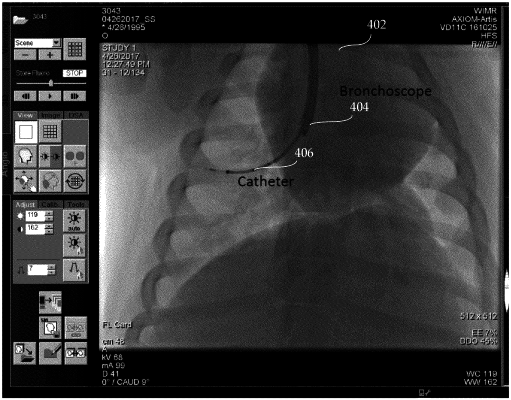| CPC A61B 1/2676 (2013.01) [A61B 1/00009 (2013.01); A61B 34/20 (2016.02); A61B 34/25 (2016.02); G06T 7/11 (2017.01); G06T 7/174 (2017.01); G06T 7/74 (2017.01); G06T 11/006 (2013.01); A61B 2034/2057 (2016.02); A61B 2034/2065 (2016.02); G06T 2207/10028 (2013.01); G06T 2207/10064 (2013.01); G06T 2207/10068 (2013.01); G06T 2207/10081 (2013.01); G06T 2207/10088 (2013.01); G06T 2207/30021 (2013.01); G06T 2207/30061 (2013.01); G06T 2207/30172 (2013.01)] | 13 Claims |

|
1. One or more non-transitory computer-readable media embodying instructions executable by a processor to perform operations, comprising:
segmenting, by the processor, a region of interest in three-dimensional (3D) image data to generate a segmented region of interest;
detecting, by the processor, a region of an endoscopic instrument in two-dimensional (2D) intraoperative image data of the region of interest and determining a centerline of the detected region of the endoscopic instrument;
performing, by the processor, backprojection of the endoscopic instrument and the centerline to generate a 3D backprojected volume including a backprojected endoscopic instrument and a backprojected centerline;
determining multiple segment groupings that directionally connect a main segment of the segmented region of interest to a most distal segment of the segmented region of interest;
determining, by the processor, a device path for guiding the endoscopic instrument, including selecting at least one segment grouping from the multiple segment groupings with a smallest penalty function value based at least in part on a sum of shortest distances between a centerline of the at least one segment grouping and the backprojected centerline of the backprojected endoscopic instrument; and
generating, by the processor, a visualization of the device path from a starting point to a target point.
|